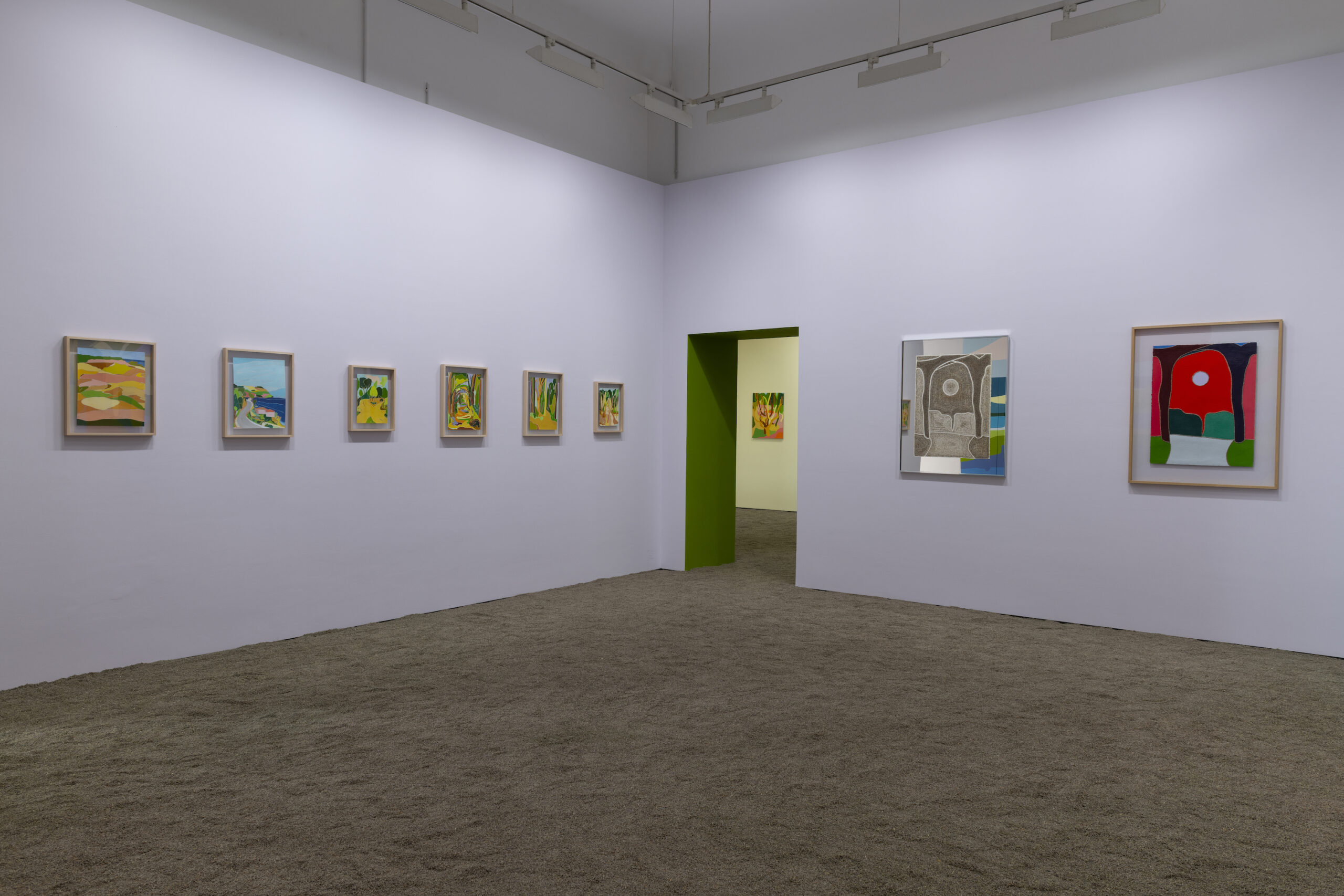How to Map the Infinite
Casino Luxembourg - Forum d'art contemporain
10.06.2023 → 01.07.2024
Lavender shall guide your senses.
As you enter the ground floor, a smell of lavender hovers in the air. How to Map the Infinite is Tessa Perutz’s first institutional solo show. A carpet of harvested lavender flowers is laid out throughout the two gallery spaces. Untitled (Mer de Lavande) was first installed in October 2019 in the artist’s second Belgian solo presentation at a gallery in Brussels. The exhibition titled Jardin du Midi. As I’m writing this text I haven’t stepped or walked on it (yet) and can only presume.
Tessa and I meet in Ghent in March 2021 at the opening of a mutual artist friend. Sometime later she makes a digital “call out”—for people interested in sitting for their portrait. We arrange a session. Two uniquely intimate moments of sitting together, gazing and being gazed at, getting familiar as newly met strangers, resulting in a variety of multifaceted watercolours on paper of versions of “me(s)”.
In The Andy Warhol Diaries, S1:E1:
“If you’ve ever been drawn or painted by an artist, it’s a very flattering process, it’s almost erotic, and it does establish a bond. An emotional kind of bond, in a way.”
The portraits on paper are not part of the show, yet the bonding infused.
From Jardin du Midi there is another artwork hanging here, Isabelle’s Hibiscus, Bourgogne #2 (Esprit du Roi Soleil). You’ll also find it reproduced on the main communication media.
How to Map the Infinite brings together paintings on canvas and paper, mostly existing, and mostly spanning the four-year period the artist spent in Europe. Specific sceneries are chosen as mementos, demarking periods in time. Motifs of bodies of water, forest canopies, botanicals, and the sun and moon play freely, opening up spaces to consider personal and universal themes of connection and separation, life and death. As we wander around, immersed in both fields and valleys, landscapes both real and psychological, the title of the exhibition invites to an exploration into the vast and boundless realms of human experience, trying to make sense of the limitless aspects of existence. The juxtaposition of tangible landscapes, symbolic patterns, and sensory elements like lavender flowers symbolize an artistic endeavour to map the complex interplay between the physical and metaphysical aspects of life.
Alongside framed landscapes, a mural fresco represents a Mediterranean skyline as seen from a renowned rooftop, Le Courbusier’s Cité Radieuse in Marseille. Aspired to follow in the steps of some French Modern avant-gardes, entranced in her turn by the specific light and characteristic fauna and flora, Tessa Perutz intends to revisit views of historically male academic practice through contemporary female artistic intuition and gaze.
Concerned with the cyclical nature of life and afterlife, the artist repeats specific abstract and representational motifs to simulate the recurring waves of energy found in all life forms. Allusions to natural symmetries or patterning, via reflections in water, sun cycles, or split horizons, reflect an inquiry into the infinite nature of regeneration and rebirth—constant in both the human and natural worlds. Another essential element in Perutz’s practice is colour, often reminiscent of psychedelia. A wide palette is used to delineate familiar forms, which become wondrous and dreamy, evoking feelings of wanderlust. Each stroke of colour, line applied, and texture added, become a representation of memory, capturing the essence of the places visited and emotions stirred within. Fields, forests, and seasides are depicted in vivid hues of tropicalia, freeing them from notions of temporality of geography, mixing signals for night and day, existing in a fantastical world.
Ultimately the title could resume to encapsulate Tessa Perutz’s aspiration to transcend the confines of traditional artistic boundaries, and venture into the intangible, evoking a sense of wonder and contemplation about the nature of reality, perception and the ever-expanding universe of emotions and experiences.
The exhibition is accompanied and prolonged by a publication, a collection of edited texts from the artist’s diaries stemming from the period spent in Europe, interspersed with poems accompanying carefully selected painting motifs. The publication is scheduled for Spring/Summer 2024.
Text by Stilbé Schroeder












